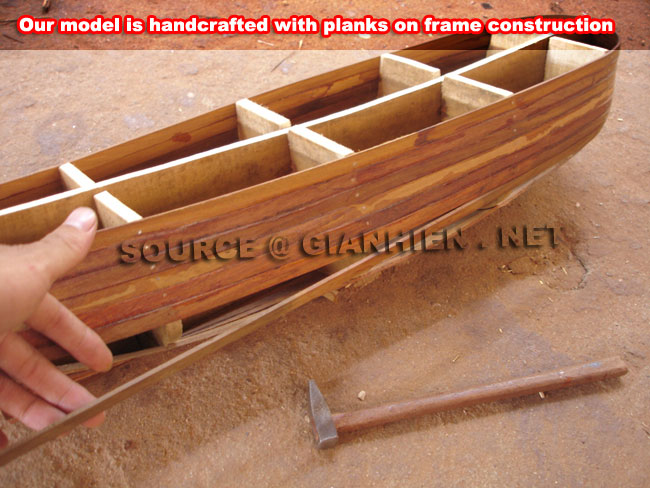|
SHIP'S HISTORY
The Protecteur
as a 64 gunship as a matter of fact never existed!
It seems that the Paris (France) 'Musťe de la Marine' 64
gunship model had been wrongfully named by the admiral
P‚ris, keeper of the museum at the end of the 19th Century.
He thus christened this model with the help of a commentary
written on a time register, but whithout checking the name's
truthfulness, especially regarding the ship's armament.
Well, a 64 gunship named Protecteur really existed; her
building began under the direction of NoŽl POMET under the
reign of the French king Louis XV, in 1757 in Toulon
(harbour of the south of France), was launched on the 21st
of May 1760 and sailed until 1789. She was furthermore
commanded by Mr de Grasse Limermont and was part of the
count of Estaing's fleet during the Grenada campain on the
6th of July 1779.
The Protecteur was armed with guns which cannonballs' weight
identify the guns : the bigger ones, placed in the first
battery (the lower deck), fired 24 pounds (almost 12
kilograms) cannonballs, the 12 pounds guns threw 6 kg
cannonballs, and the smaller ones, the 8 pounds guns, fired
a 4 kg charge.
The maximum range of these guns was 3 700 meters, but the
best efficiency (precision and destructive effects)
prescribed to fire them to a range of about 600 meters...
The guns were the only long-range weapons aboard the ship.
Their handling was dangerous, time consuming, as well and it
took even a well-trained crew several minutes to recondition
one of these huge machines after a fire.
A 24 pounds gun and its carriage weighed about 3 tons, and
it needed no less than 13 men to operate it. The 12 pounds
guns needed 9 sailors, and the 8 pounds; 7.
When a 64 gunship fired, about 330 men had to work
simultaneously, locked in dark and smoky decks. One unique
broadside threw 260 kilograms of iron cannonballs on its
target.
Some fifty people (often ships' boys, hardly 12 years old)
had to carry the gunpowder and the cannonballs from the
magazine, in the depth of the ship.
During the battles (and also the rest of the time), the ship
had to be maneuvered, and another hundred people or so were
divided among the decks and aloft.
To this floating town had to be added Marine Light Infantry
troops, which consisted of some hundred soldiers, divided
among decks and tops, and who fired once the ships were
close enough.
It was not rare that during war times, a ship such as the
Protecteur accommodated 600 men, who had to be fed and
quartered during several months straight of.
Such a promiscuity in a space so confined led to health
problems that could take catastrophic proportions in no
time. The ship surgeon would found himself completely cut
off, and only depended on his knowledge, his implements and
the famous more or less water down rum to take of all the
harms that did not bound to happen during the ship's
missions.
The fresh food was rapidly eaten, and the men had to be fed
with salted meats (pork, beef or cod) and more or less
limpid water, taken from barrels on the hold of the ship.
The daily water ration for the seamen was 4 liters
(including cooking needs), and was often rationed when the
reserves became too low...
During long missions, Scurvy affected seamen with lack of C
vitamin seamen. The crew was also weakened by all the wounds
suffered during normal sailing : falls, battle injuries,
leading very often to amputations, the surgeon working in a
small and badly lit sickbay.
A tourniquet, a rapid alcohol bumper, and the amputation saw
did its work. No wonder that numerous men wounded during the
battles died from their injuries in the days following the
fight.
Such life conditions were endured by the crew whith the help
of an iron discipline : navigation laws were implacable as
far as punishments are concerned; the irons, whipping with
ropes, 'run the bowline' ('courir la bouline', in French),
that is to run between two lines of seamen handling ropes,
or worse, the 'hold' punishment ('la cale') : let a tied on
man fall in the water from the yardarm, or worst the 'great
hold' ('la grande cale'), where the man was pulled
underneath the ship! Finally the convicts would be put in
prison or to death by hanging.
Despite all this, these ships represented the golden age of
the sailing navy; a ship such as the Protecteur measured 74
meters long, 14 meters wide and 64 meters in heigh! Her main
mast was 90 centimeters in diameter, and the whole ship
weighed 3 000 tons... |

